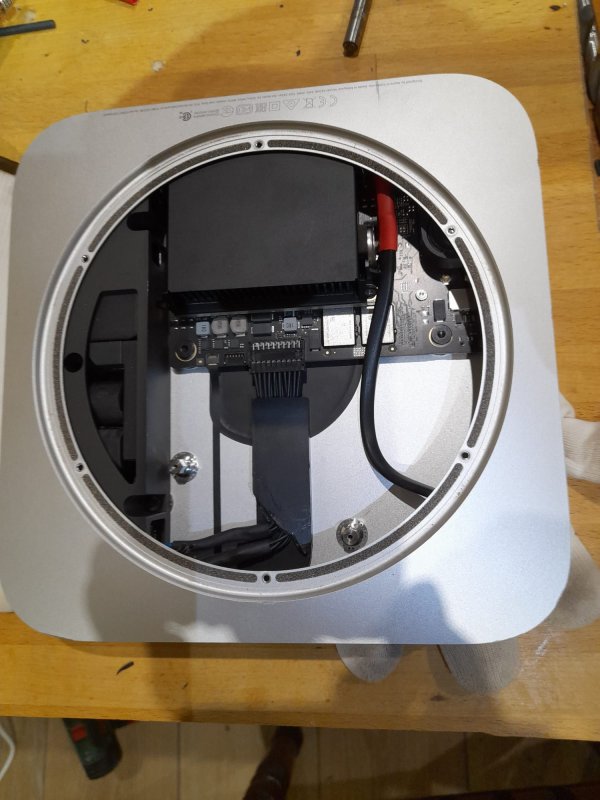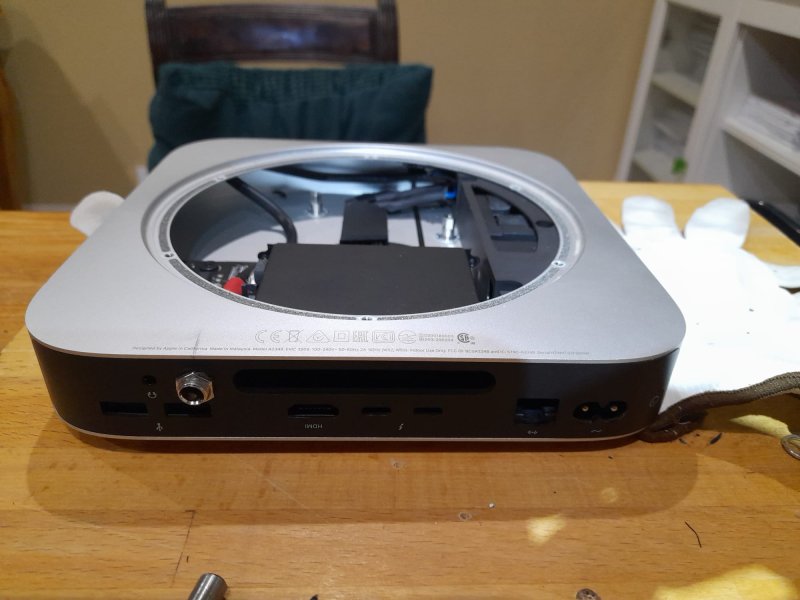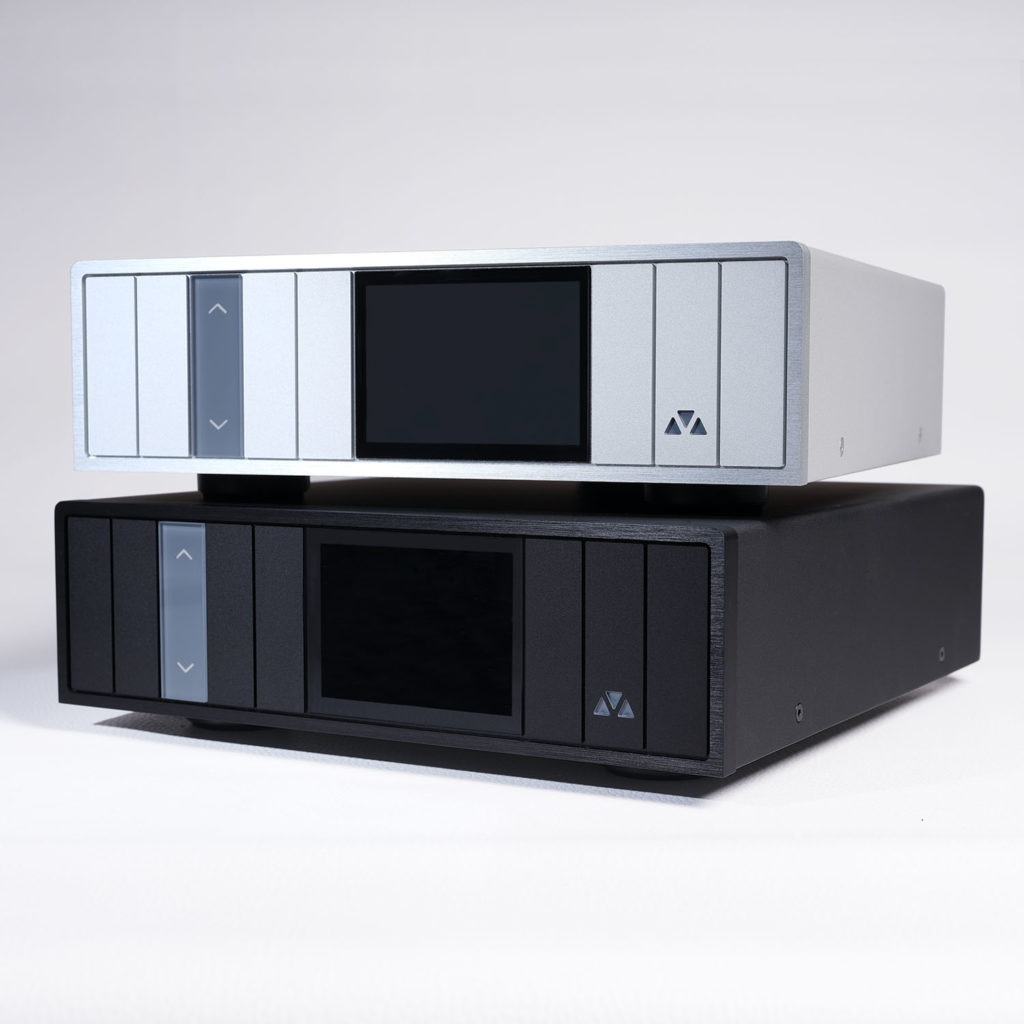Hi Guys. Some who have followed me know I have recently upgraded my Pure Audio Project speakers. And as most have found out, as we climb the upgrade path, improving a component in the system is great, but leads us to notice a weakness somewhere else.
SO, I don't suspect my Passlab 60.8 monos as have tried many amp before I got those, and my Chord DAVE is also really good for DAC duties. Which left me to focus on my music server.
I have had some music servers in the past including the 432 EVO, which was very good, but blew up, proved unreliable. So I went back to a Mac mini which I am comfortable tweaking and running software on.
You can run the Mac mini headless, mouseless and no keyboard, as I screen share it, so no SMPS involved on the screen side. And I use ethernet and a Paul Pang Quad switch for streaming connection. My router for the house is on an sBooster linear power supply.
The Mac Mini M1 has an internal SMPS, which I disconnected. Then I hooked up the wiring harness (14 tiny wires) to a 12v DC socket at the back, by drilling a hole above the USB ports. It is really right, so you need to get the position spot on. Then I use another sBooster 12V DC to power the Mac mini.
The MacMini already sounded really good, but using 12V DC on it has taken it much higher, the sound is more liquid, particularly the treble ranges, and is more relaxed and natural.
For software I use the FREE Lyrion Music Software, which is open source and based on the now defunct Logitec Media Server software. It sounds really good, better than Audirvana Studio and miles ahead of Roon. Roon sounds slow and closed in, smaller soundstage, as I have found for years, since it's inception, which is a pity.
The Mac mini is coasting using 3% of its chip power. All actions and software are removed from it, it is very stripped back for only music playing.

With the base plate and fan housing removed, you can see the wiring harness and the 2 new wires running along the right side. There is space inside the Mac mini M1, and the main board is very compact. You need a specialist work screwdriver set, as the screws are tiny.

Here is the new DC input socket. I used one with a screw down ring that holds the cable from the LPS tight, most important, or it can cause sparks and blow the board.
The cost of my server:
1. Mac mini M1 (used) 350 euros
2. sBooster 12V 300 euros
3. Lyrion music software - FREE
4. Solder, wiring - almost FREE
I admit I was nervous booting it up for the first time, but no worries, it is flawless. I work on another Mac mini and can easily control the other one with screen share, no latency either, it is as though it has it's own screen.
So for anyone wanting top performance on a tiny budget, without going the PC and extra boards route, this is a very clean solution. I boots up in 15 seconds, the M1 chip is super fast. It has easily enough power to upsample and convert DSD with HQ Media Player if you wanted to do that bolted onto Roon.
This route also fits my ideal, of having less components and cables in my system. I remember the days of USB convertors, OffRamp 4, Uptone Audio filters etc etc. Spaghetti, I don't want to go back that!
Feel free to PM me if you want to build one.
SO, I don't suspect my Passlab 60.8 monos as have tried many amp before I got those, and my Chord DAVE is also really good for DAC duties. Which left me to focus on my music server.
I have had some music servers in the past including the 432 EVO, which was very good, but blew up, proved unreliable. So I went back to a Mac mini which I am comfortable tweaking and running software on.
You can run the Mac mini headless, mouseless and no keyboard, as I screen share it, so no SMPS involved on the screen side. And I use ethernet and a Paul Pang Quad switch for streaming connection. My router for the house is on an sBooster linear power supply.
The Mac Mini M1 has an internal SMPS, which I disconnected. Then I hooked up the wiring harness (14 tiny wires) to a 12v DC socket at the back, by drilling a hole above the USB ports. It is really right, so you need to get the position spot on. Then I use another sBooster 12V DC to power the Mac mini.
The MacMini already sounded really good, but using 12V DC on it has taken it much higher, the sound is more liquid, particularly the treble ranges, and is more relaxed and natural.
For software I use the FREE Lyrion Music Software, which is open source and based on the now defunct Logitec Media Server software. It sounds really good, better than Audirvana Studio and miles ahead of Roon. Roon sounds slow and closed in, smaller soundstage, as I have found for years, since it's inception, which is a pity.
The Mac mini is coasting using 3% of its chip power. All actions and software are removed from it, it is very stripped back for only music playing.

With the base plate and fan housing removed, you can see the wiring harness and the 2 new wires running along the right side. There is space inside the Mac mini M1, and the main board is very compact. You need a specialist work screwdriver set, as the screws are tiny.

Here is the new DC input socket. I used one with a screw down ring that holds the cable from the LPS tight, most important, or it can cause sparks and blow the board.
The cost of my server:
1. Mac mini M1 (used) 350 euros
2. sBooster 12V 300 euros
3. Lyrion music software - FREE
4. Solder, wiring - almost FREE
I admit I was nervous booting it up for the first time, but no worries, it is flawless. I work on another Mac mini and can easily control the other one with screen share, no latency either, it is as though it has it's own screen.
So for anyone wanting top performance on a tiny budget, without going the PC and extra boards route, this is a very clean solution. I boots up in 15 seconds, the M1 chip is super fast. It has easily enough power to upsample and convert DSD with HQ Media Player if you wanted to do that bolted onto Roon.
This route also fits my ideal, of having less components and cables in my system. I remember the days of USB convertors, OffRamp 4, Uptone Audio filters etc etc. Spaghetti, I don't want to go back that!
Feel free to PM me if you want to build one.
Last edited:












